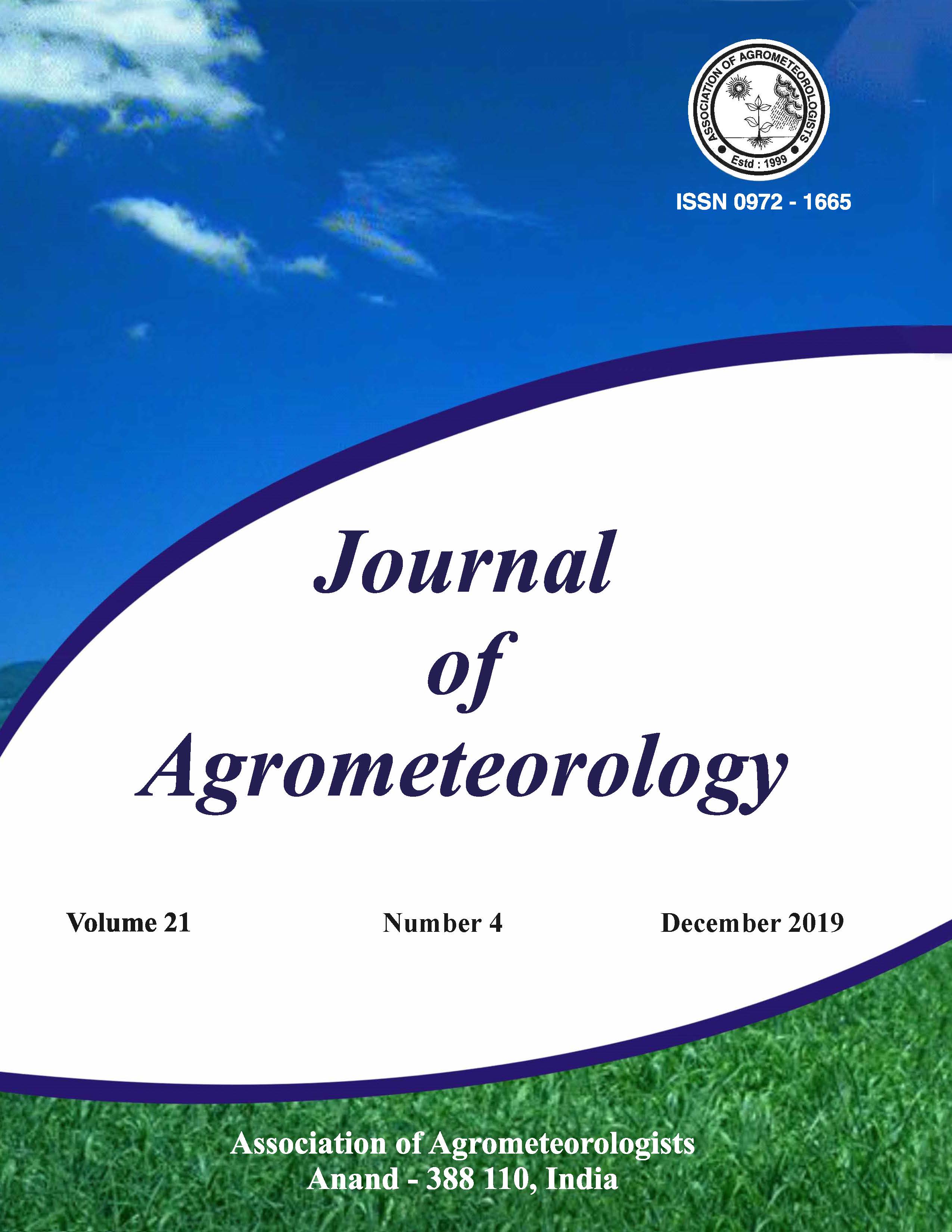Bayesian discriminant function analysis based forecasting of crop yield in Kanpur district of Uttar Pradesh
DOI:
https://doi.org/10.54386/jam.v21i4.281Keywords:
Crop yield forecasting, posterior probabilities, discriminant function analysisAbstract
Discriminant function analysis technique using Bayesian approach has been attempted for wheat forecasting in Kanpur district of Uttar Pradesh, India both qualitatively and quantitatively. Crop yield data and weekly weather data on temperature (maximum and minimum), relative humidity (maximum and minimum), rainfall for 16 weeks of the crop cultivation have been used in the study. These data have been utilized for model fitting and validation. Crop years were divided into two and three groups based on the de-trended yield. Crop yield forecast models have been developed using posterior probabilities calculated through Bayesian approach in stepwise discriminant function analysis along with year as regressors for different weeks. Suitable strategy has been used to solve the problem of number of variables more than number of data points. Performance of the models obtained at different weeks was compared using Adjusted R2, PRESS (Predicted error sum of square), number of misclassifications. Forecasts were evaluated using RMSE (Root Mean Square Error) and MAPE (Mean absolute percentage error) of forecast. The result shows that the model based on three groups case perform better. The performance of the proposed Bayesian discriminant function analysis technique approach was better as compared to existing discriminant function analysis score based approach both qualitatively and quantitatively.
Downloads
Published
How to Cite
Issue
Section
License

This work is licensed under a Creative Commons Attribution 4.0 International License.
This is a human-readable summary of (and not a substitute for) the license. Disclaimer.
You are free to:
Share — copy and redistribute the material in any medium or format
Adapt — remix, transform, and build upon the material
The licensor cannot revoke these freedoms as long as you follow the license terms.
Under the following terms:
Attribution — You must give appropriate credit, provide a link to the license, and indicate if changes were made. You may do so in any reasonable manner, but not in any way that suggests the licensor endorses you or your use.
NonCommercial — You may not use the material for commercial purposes.
ShareAlike — If you remix, transform, or build upon the material, you must distribute your contributions under the same license as the original.
No additional restrictions — You may not apply legal terms or technological measures that legally restrict others from doing anything the license permits.
Notices:
You do not have to comply with the license for elements of the material in the public domain or where your use is permitted by an applicable exception or limitation.
No warranties are given. The license may not give you all of the permissions necessary for your intended use. For example, other rights such as publicity, privacy, or moral rights may limit how you use the material.





